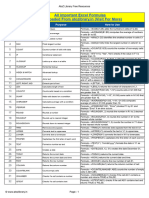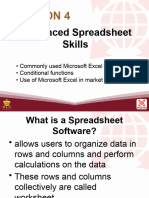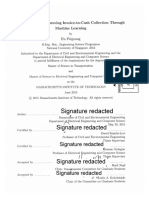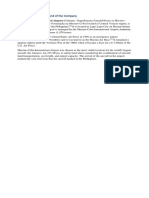0% found this document useful (0 votes)
12 views9 pagesExcel Cheat Sheet
The document provides a comprehensive guide to various Excel formulas, categorized into sections such as Basic Formulas, Logical Functions, Conditional Aggregation, Lookup & Reference, Text Functions, Date & Time, Statistical & Math Functions, and Data Analysis Helpers. Each formula is accompanied by a brief description and an example for clarity. This serves as a useful reference for users looking to enhance their Excel skills.
Uploaded by
brownieyesCopyright
© © All Rights Reserved
We take content rights seriously. If you suspect this is your content, claim it here.
Available Formats
Download as PDF, TXT or read online on Scribd
0% found this document useful (0 votes)
12 views9 pagesExcel Cheat Sheet
The document provides a comprehensive guide to various Excel formulas, categorized into sections such as Basic Formulas, Logical Functions, Conditional Aggregation, Lookup & Reference, Text Functions, Date & Time, Statistical & Math Functions, and Data Analysis Helpers. Each formula is accompanied by a brief description and an example for clarity. This serves as a useful reference for users looking to enhance their Excel skills.
Uploaded by
brownieyesCopyright
© © All Rights Reserved
We take content rights seriously. If you suspect this is your content, claim it here.
Available Formats
Download as PDF, TXT or read online on Scribd
/ 9





















































































